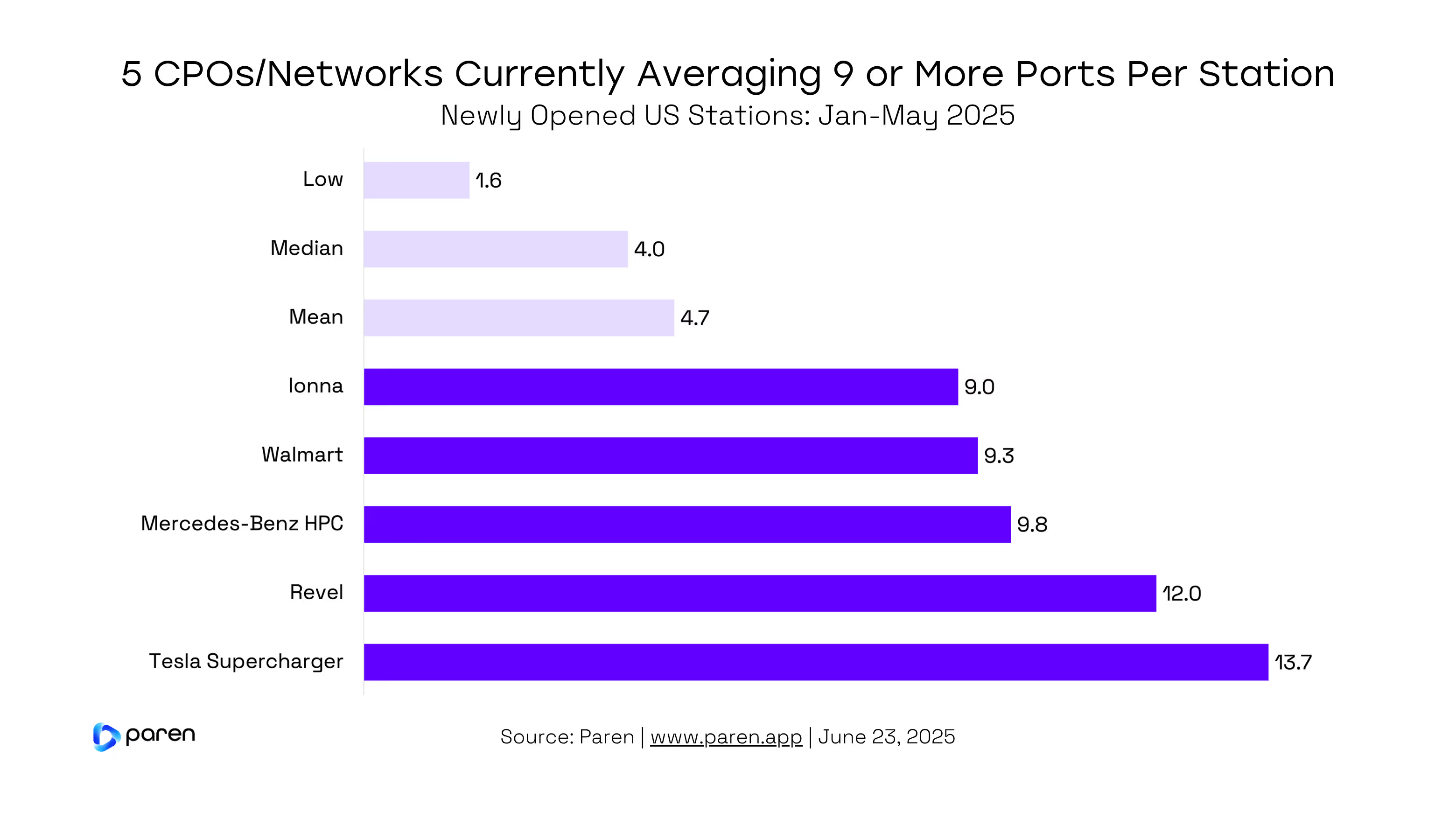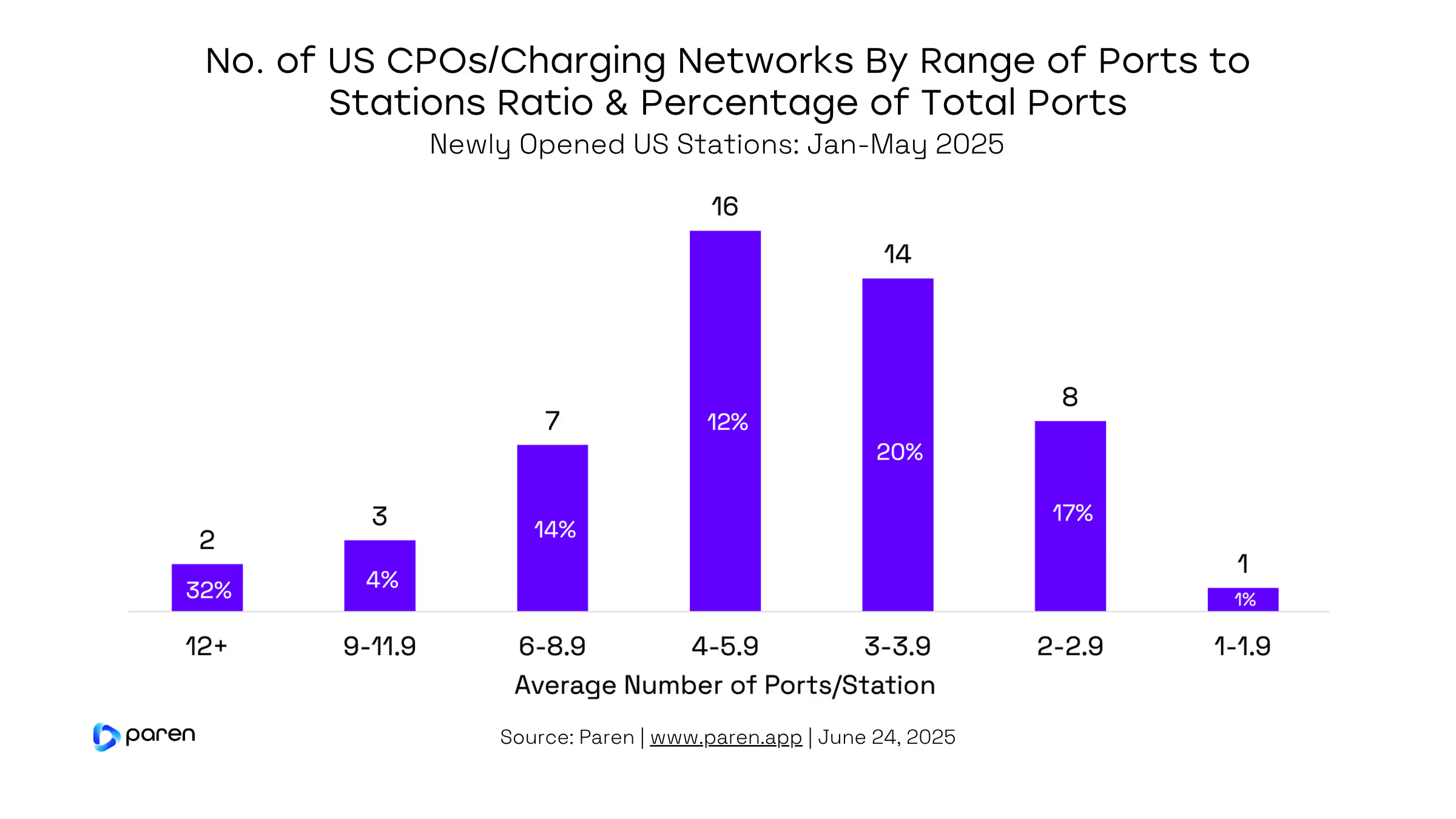Fast Charging Is Growing Up
.avif)
So far in 2025, DC fast charging (DCFC) stations in the U.S. are getting noticeably larger. New data from Paren’s Public Charger Database shows that from January through May, the average number of ports per newly opened station has climbed to 4.7. This marks a clear shift from the earlier norm of 1–2 port installations that left drivers frustrated with long wait times and low charger availability.
Of the 68 charging point operators (CPOs) and networks Paren tracks, 51 opened at least one new station during the first five months of 2025. Among those, 28 averaged four or more ports per station—and 12 exceeded six ports on average.
Encouragingly, many of the most aggressive adopters of this “bigger is better” model are newer entrants. Revel, Mercedes-Benz HPC, Walmart, and Ionna are all averaging nine or more ports per station in their early builds. Industry leader Tesla, long known for prioritizing scale and redundancy, continues to set the bar with an average of nearly 14 ports per new Supercharger location.

At the other end of the spectrum, just nine networks averaged fewer than three ports per new station in 2025. Some of the largest non-CPO platform providers—ChargePoint, EVConnect, and Blink—fall into this group, accounting for 38% of new stations so far. But there are signs of evolution here too: ChargePoint’s customer deployments have grown from an average of 1.5 ports per site pre-2025 to 2.3 ports YTD.

When calculating the weighted average based on all new station builds, the industry-wide figure rises slightly to 4.8 ports per station. However, removing the three major non-CPO players mentioned above pushes that number dramatically higher, to 6.1. That’s a strong indicator of where the rest of the market is headed.
Even more striking: five networks averaging nine or more ports accounted for 36% of all new ports installed this year—and Tesla alone represented a staggering 87% of that group’s ports. Meanwhile, the 30 CPOs averaging between 3 and 5.9 ports per station accounted for another 31% of total new ports.
All signs point toward a fast-charging landscape dominated by larger, higher-capacity stations. In fact, 82% of all new stations in 2025 so far have three or more ports. That’s great news for EV drivers, as it boosts reliability, reduces wait times, and makes finding an available charger far more likely.
The takeaway? The U.S. fast charging market is scaling up—not just in numbers of stations, but in capacity at each location. This shift is critical to keeping pace with the growing EV fleet and improving the overall public charging experience.